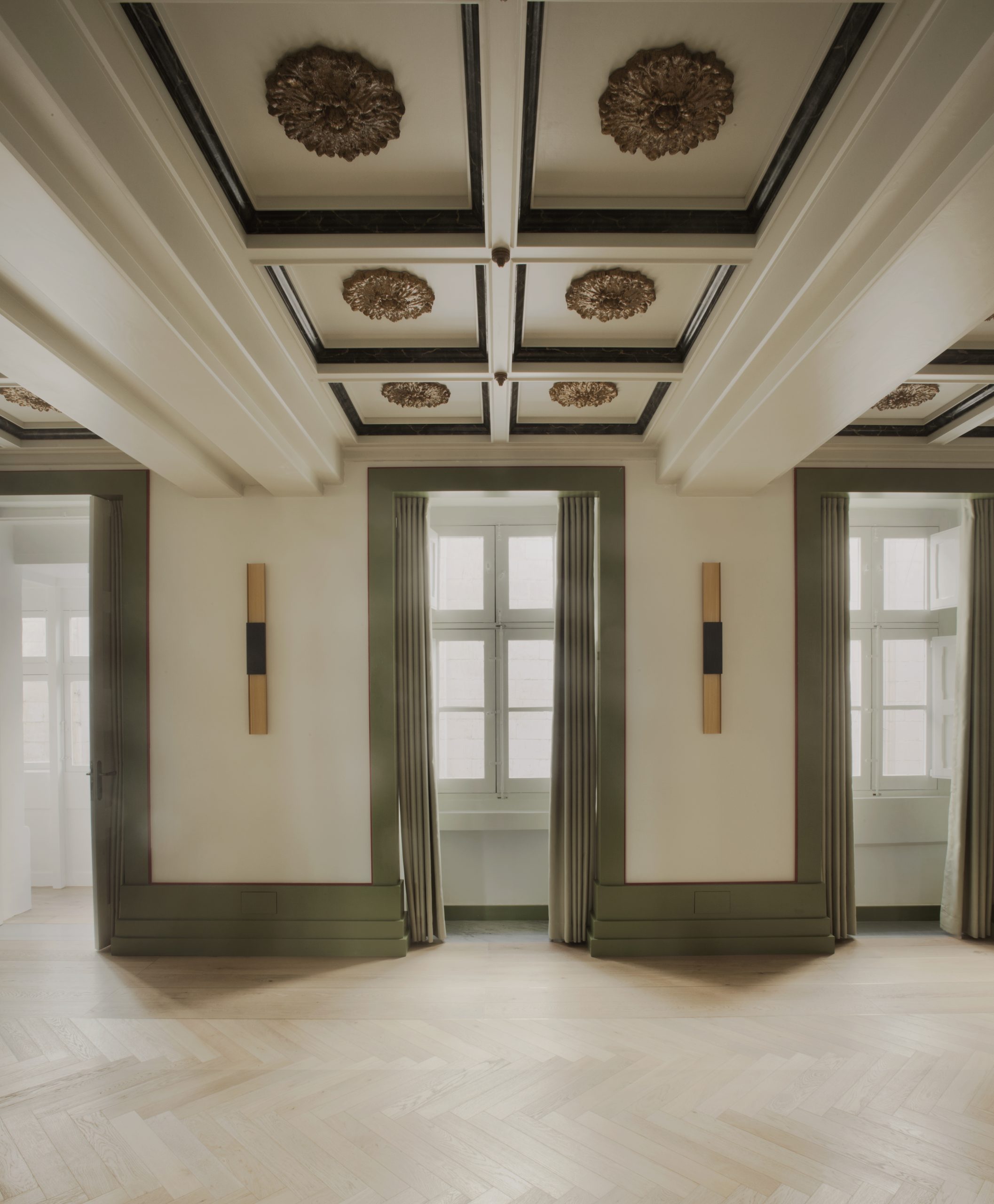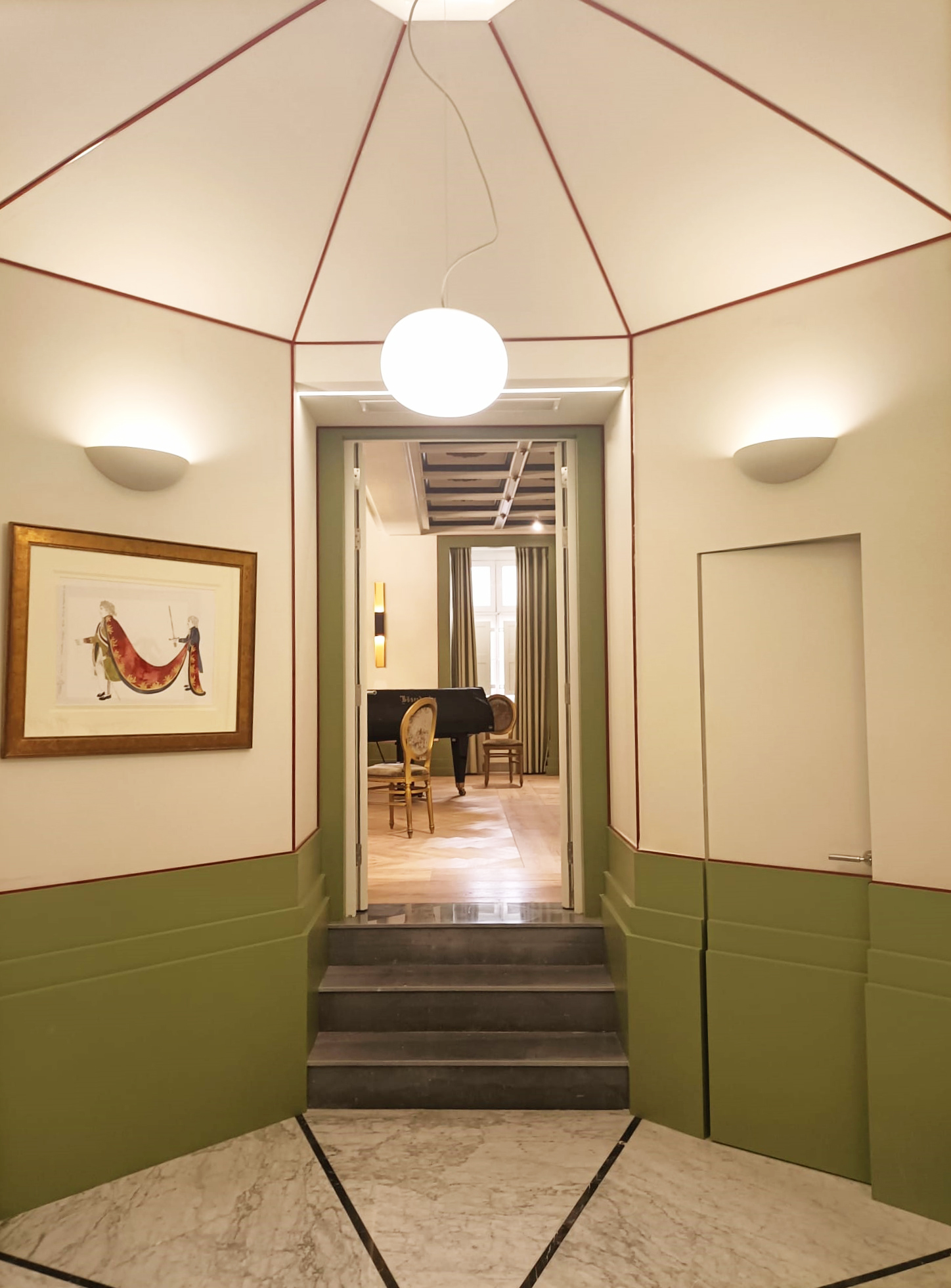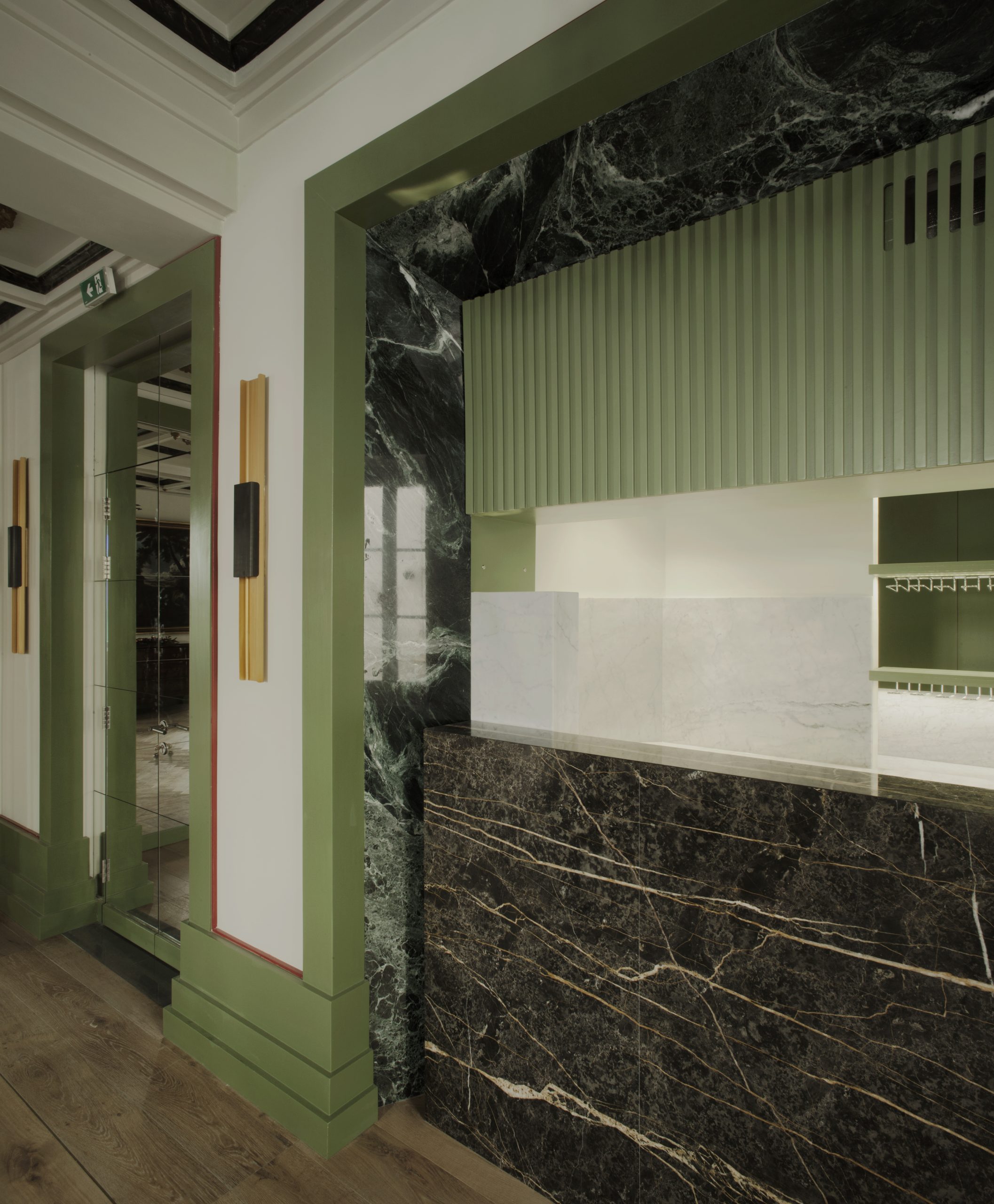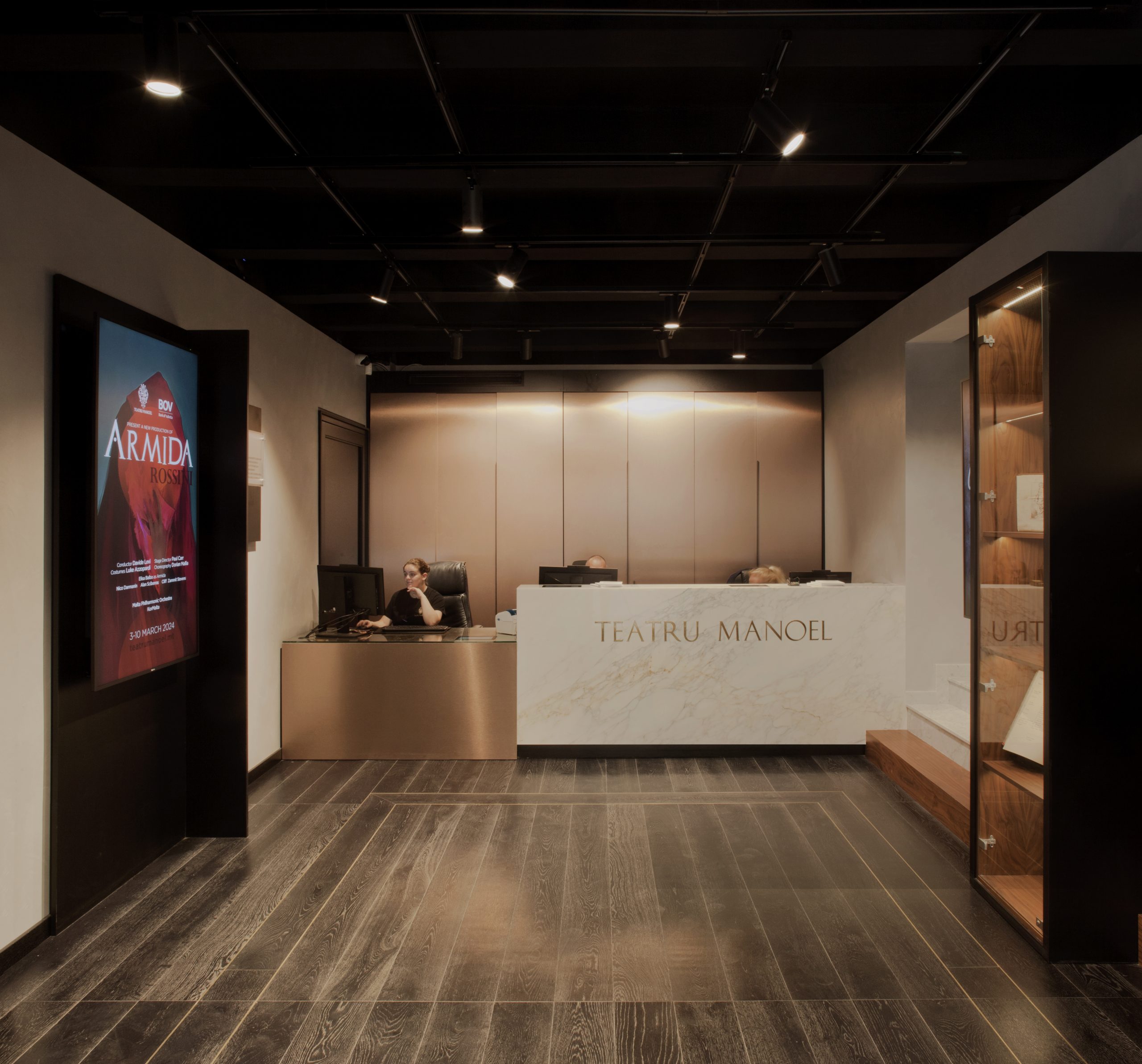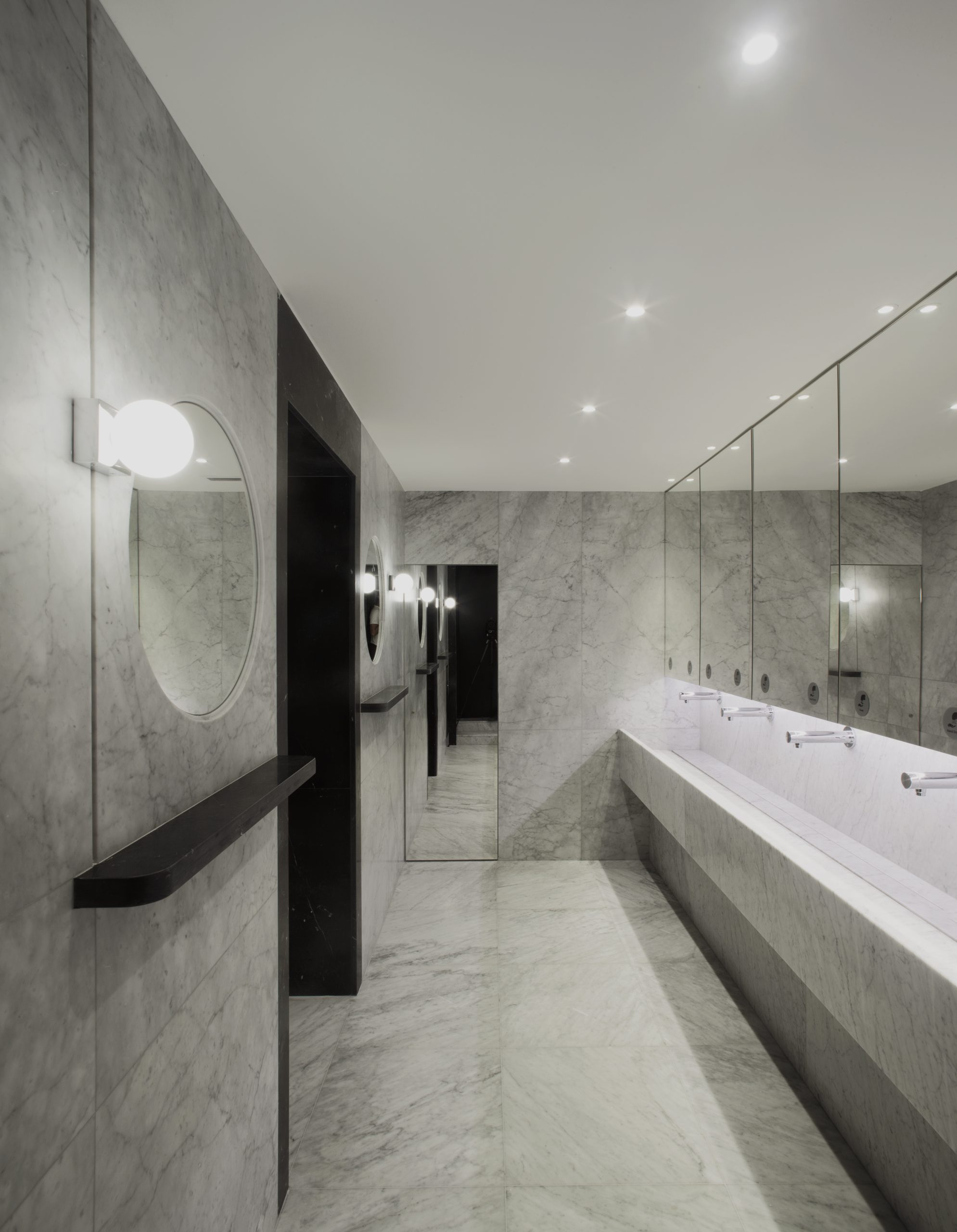Priory of Navarre
| Date | 2023 |
|---|---|
| Client | Private |
| Value | n.a. |
| Location | Valletta, Malta |
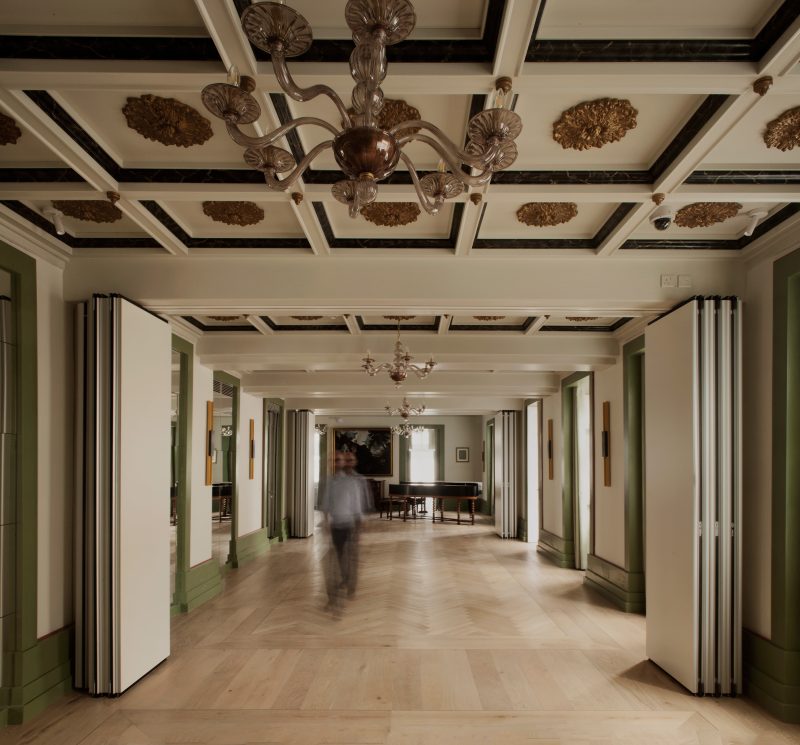
Our project for the re-purposing of the old Priory of Navarre was based on a design that blends the building’s original austere identity as a convent, with the contrasting Baroque essence of the adjacent theatre to which it has, in time, been annexed. This difficult marriage was arranged while introducing new functions such as a booking office, exhibition spaces, a public event space, a café, and other ancillary rooms. Guided by reverence for the building's history, commitment to functional innovation, and an ambition to provide visually striking spaces, the intervention revitalizes the building and adapts it to allow the accommodation of contemporary uses, all the while creating a new originality and timelessness.
The main space on the ground floor embodies the intrinsic qualities of the building’s heritage as an 18th century theatre. To achieve this, materials and objects evocative of the world of theatre were carefully selected and included in the composition of the interior. A colour palette based on black, used on both floor and ceiling, is complemented by suspended track lighting to create an atmosphere reminiscent of a backstage environment. The centerpiece, on the other hand, is a large block of Calacatta marble that serves as a counter, but also a dramatic visual anchor that is visible from the street and that plays on the manipulation of scale typical of stage scenography.
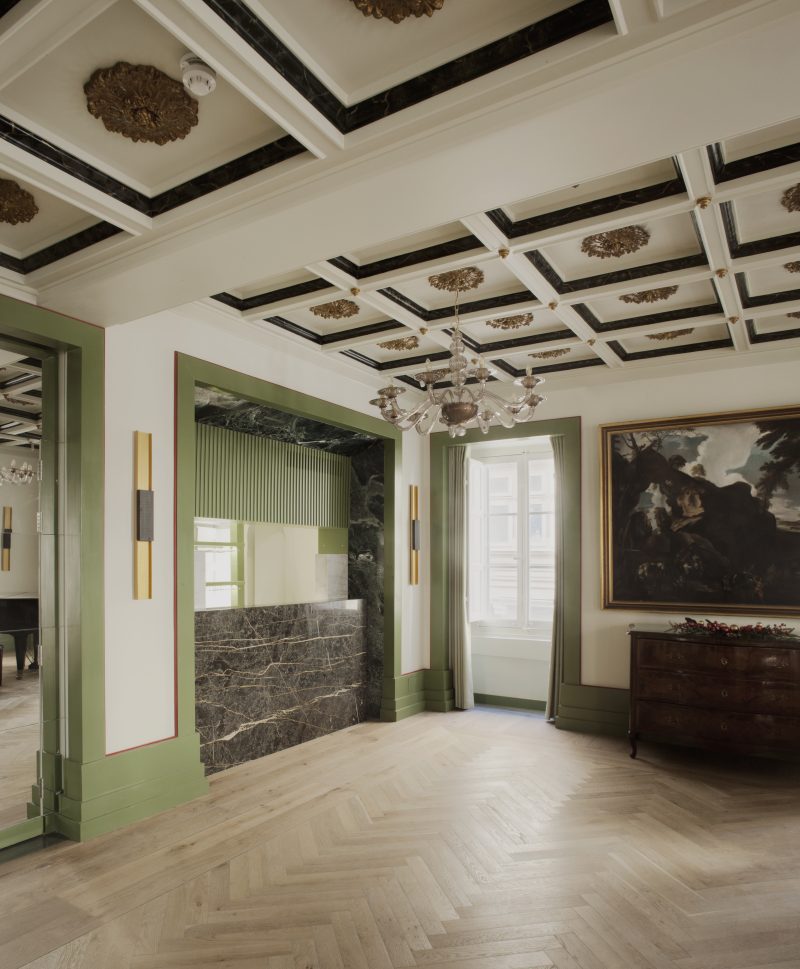
At this level, visitors are guided from the bustling exterior into the heart of the building where a central vaulted corridor has been restored to contain a timeline installation narrating the theatre’s rich history.
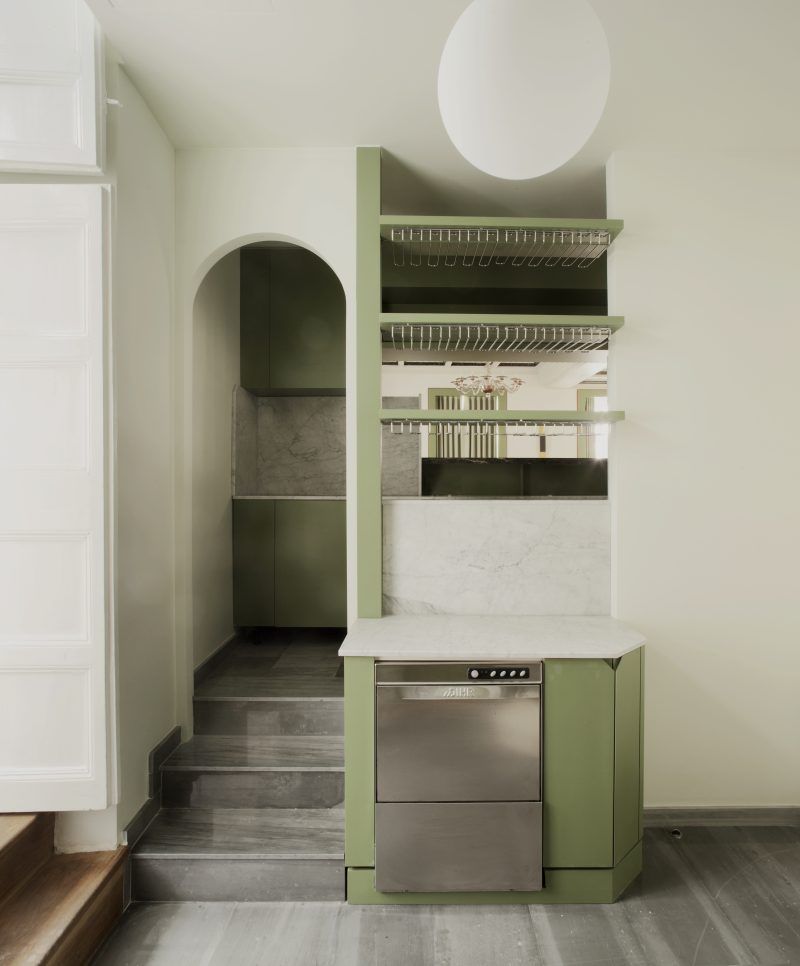
New public toilets have been inserted at the basement level. These exploit the contrast between two different marbles, Nero Marquinia and Bianco Carrara, to create a rich interior worthy of the theatre’s glamorous history. Moreover, first floor, a new octagonal vestibule was designed to connect the theatre to a new event hall, a versatile space, created as part of the project, that can be used for diverse cultural events. High folding partitions, a new coffered ceiling, timber aperture frames, and high timber skirting are all contemporary interpretations of typical elements in historic halls.
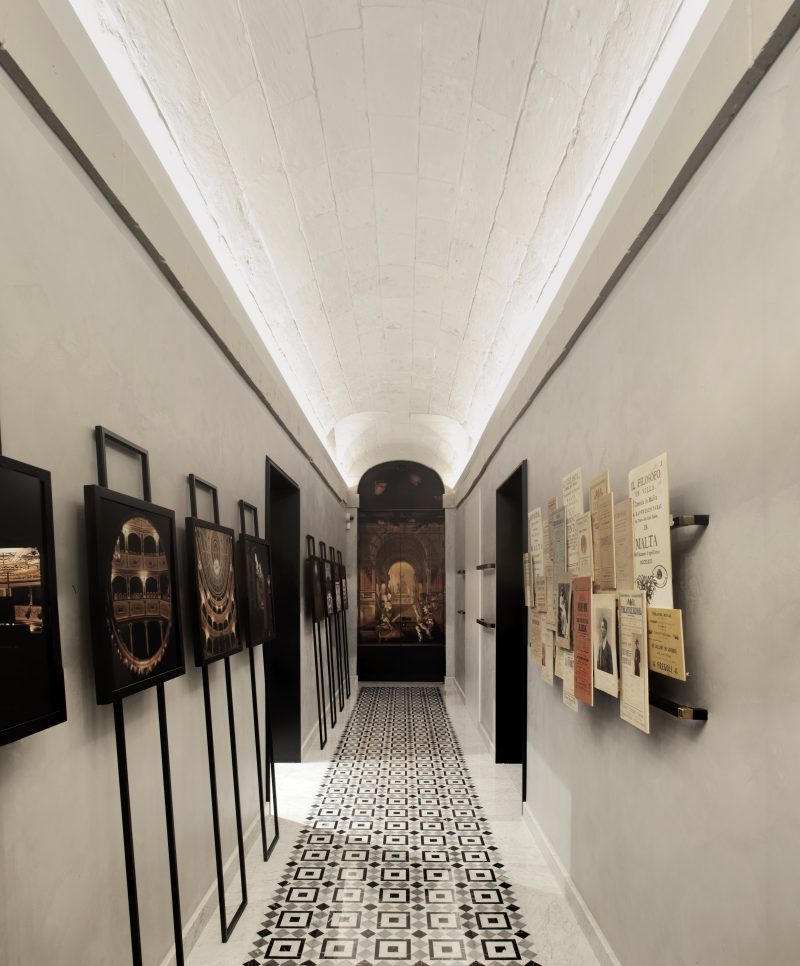
Through these design strategies, the intervention not only revitalizes the building for contemporary use but also pays homage to theatre’s resplendent past.
